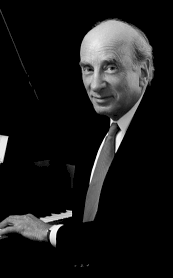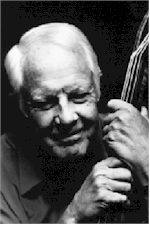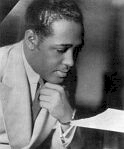Church music is a golden thread that runs through much of America's musical heritage. Gospel hymns and African-American spirituals were a source of inspiration for jazz and blues musicians and composers in the early decades of the 20th century. You can hear the influence of church music today in country, R&B, jazz, blues and soul.
The “Father of Gospel Music," Thomas A. Dorsey, began his career siding with the ‘devil’ in his taste for music. It was an era when anything with a hint of swing was known as the “devil’s music.” Church-going folk banned it from their homes.
Dorsey made a name for himself playing piano with the earthy blues queen Ma Rainey and her Rabbit Foot Minstrels. Under the stage name “Georgia Tom,” Dorsey had several successful records with slide guitarist Tampa Red in a bawdy, hokum blues style.
Thomas A. Dorsey talked about his early life as a bluesman: “I worked in the circus for a while as a water boy but I didn’t become caught up in show business until I started selling soda pop at the 81 Theatre in Atlanta— that’s where I heard people like Bessie Smith doing those blues numbers and shaking everything they had.” After the death of his wife in childbirth he turned to writing gospel music. “I was doing alright for myself but the voice of God whispered, ‘You need to change a little.’”
Thomas A. Dorsey devoted himself exclusively to composing and performing religious music and pioneered a new style of sacred music, applying blues melodies and rhythms to spiritual themes. In 1930 he wrote his most successful gospel hymn, “Take My Hand, Precious Lord.” Dorsey was also instrumental in establishing the National Convention of Gospel Choirs and Choruses which is still very active today.
This week Riverwalk Jazz presents a program of spirituals and hymns recorded live at the First United Methodist Church in Houston, Texas. The Jim Cullum Jazz Band is joined by piano legend Dick Hyman and the 60-voice combined choir of the First United Methodist Church under the direction of Ken Axelson. Dick Hyman's arrangements for jazz band and choir of “Wheel in a Wheel,” “My Lord, What a Mornin',” and “Steal Away to Jesus” were inspired by a concert of spirituals produced by W. C. Handy in 1928 at Carnegie Hall.
The broadcast explores the intersection of jazz and blues with gospel hymns and spirituals, and tracks its influence on a number of jazz composers, arrangers and performers.
Jazz composer and bassist Bob Haggart wrote arrangements for the Bob Crosby Band in the 1930s and composed popular songs including “What's New?” Haggart loved African-American gospel singing and created a jazz band version of the hymn, “I'm Prayin' Humble” based on a recording he'd heard of the gospel quartet, Mitchell's Christian Singers. The quartet had been featured in the 1938 Carnegie Hall concert produced by John Hammond, From Spirituals to Swing.
Duke Ellington was a deeply religious man. Early in his career Ellington folded religious themes into his compositions, including the magnificent “Come Sunday” from his Black, Brown and Beige suite written in 1943. In 1973, during the last year of his life, Ellington devoted almost all of his energy to composing his Third Sacred Concert. When asked why he was taking so long, he replied, "You can jive with secular music, but you can't jive with the Almighty."
Photo credit for home page teaser image: Thomas A. Dorsey, 1928. Photo courtesy Duncan Scheidt
Text based on Riverwalk Jazz script by Margaret Moos Pick ©2005





